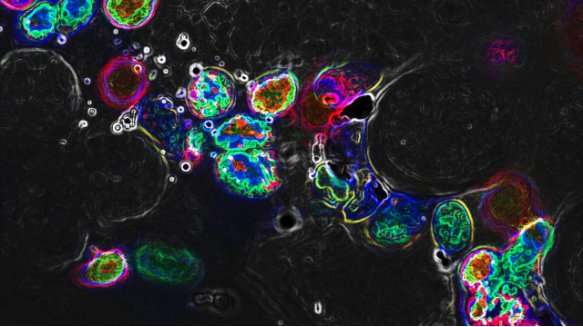The astonishing efficiency of life

All life on earth performs computations – and all computations require energy. From single-celled amoeba to multicellular organisms like humans, one of the most basic biological computations common across life is translation: processing information from a genome and writing that into proteins.
Translation, it turns out, is highly efficient.
In a new paper published in the journal Philosophical Transactions of the Royal Society A, SFI researchers explore the thermodynamic efficiency of translation. The work is part of a themed issue titled "Re-conceptualizing the origins of life."
To understand how life evolved on earth, we need to first understand the constraints that biological systems have faced over time. One constraint which hasn't been widely explored is how the laws of thermodynamics restrict biological function, and whether natural selection favors organisms with higher computational efficiency.
To discover just how efficient translation is, the researchers started with Landauer's Bound. This is a principle of thermodynamics establishing the minimum amount of energy that any physical process needs to perform a computation.
"What we found is that biological translation is roughly 20 times less efficient than the absolute lower physical bound," says lead author Christopher Kempes, an SFI Omidyar Fellow. "And that's about 100,000 times more efficient than a computer." DNA replication, another basic computation common across life, is about 165 times worse than Landauer's Bound. "That's not as efficient as biological translation, but still stunningly good compared to computers."
Scaling up to calculate the thermodynamic efficiency of higher-level biological computations like thought, and to understand how important efficiency is to natural selection, offer challenging questions for further research.
"Ultimately, we want to couple all this with computer science theory," says Professor David Wolpert, a co-author, "not only to exploit these kinds of things for computer science, but also to see if computer science theory has anything to tell us about cells."
More information: Christopher P. Kempes et al. The thermodynamic efficiency of computations made in cells across the range of life, Philosophical Transactions of the Royal Society A: Mathematical, Physical and Engineering Sciences (2017). DOI: 10.1098/rsta.2016.0343
Journal information: Philosophical Transactions of the Royal Society A
Provided by Santa Fe Institute


















